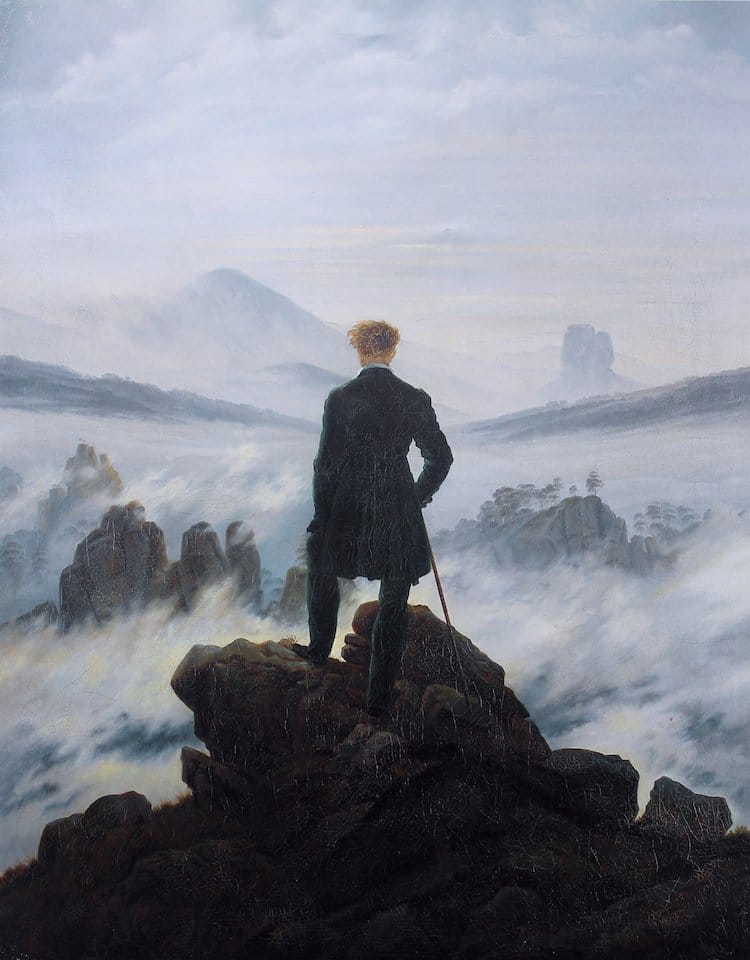Introduction to Romanticism and the Romantic Period (1798–1865)
The Romantic Period, also known as the Antebellum Era, began decades after the American Revolution and ended with the Civil War. Romanticism, the most important literary movement during the Romantic Period, established a strong emphasis on emotions and feelings in American literature. This development came as a direct opposition to the Age of Enlightenment, a previous literary movement with heavy emphasis on intellect. Romanticism itself was broken down into two sections– Transcendentalism and Dark Romanticism. Transcendentalism was a largely religious movement during the era that centralized on human intuition, feelings, and interconnection between everything in reality. Dark Romanticism was one of the literary movements that grounded itself on literary aspects such as negated religious symbols, a tragic hero, a remote setting, and an ultimate tragedy. Authors during this era worked to emphasize emotions and senses in whatever genre they took up. Authors also bounced off of the religious growth During this era, America intentionally began developing a national identity, growing its industry, expanding our borders, and remodeling the government. Despite all this change, at the end of the Civil War, the romanticized view of humanity culturally held during the Romantic Period was lost and gave way to the Era of Realism.
How Edgar Allan Poe Reflected Romantic Values
One very vital American author who directly influenced the Antebellum Era was Edgar Allan Poe. As a firm pilar of Dark Romanticism, Poe regularly included themes of remote settings, tragic heroes, and an ambiguous ending in many of his more notable works. Poe himself is an example of Romantic beliefs as he “largely ignored the materials of the American past.” (Kennedy). Instead, Poe focused more on the dark humanity of his characters, doting on and playing off of their flaws and weaving intricately dark stories. He built off of the ideas of extreme states of elation or desperation in his works, delicately fabricating a balance between good and evil that characters tread upon repeatedly. Poe also relies upon mystical, supernatural events, a theme found in Romantic authors’ works. Poe’s focus reflected the ideals of the Dark Romanticism in not only having themes portrayed in the literature of the genre but also in having an allegorical aspect to every story and poem. As one of the original inventors of the Detective genre, Poe worked to provide evidence for readers while still keeping the resolution to any of his stories hidden. This genre became widely known during the Romantic Era due to Poe’s works and heavily impacted the Dark Romantic community.
An Original Poem
The softly drifting white dots of snow that,
Love to sink, bank and cart and flow and land,
That blow along with the breeze and the bat,
And drip and drop and make a light, white band,
A halo that softens off of the ground,
Like a hopping and delicate frog,
That can not be bothered to make a sound,
A random white that blankets any log,
Even any leaf or any mountain,
Blanketing the darkening grass and rock,
Delicately freezing every fountain,
No more tweeting birds now for any mock
Brilliantly bright tracks fashion in snow,
Beautiful bends that give an earthly glow

Important Literary Themes: Transcendentalism, Dark Romanticism; Political Unrest, More Inclusive Voting for White Males, Human Rights Advocation; Kantism.
During the Romantic Era, Romanticism shifted literary focus from John Locke’s philosophy to Immanuel Kant’s philosophy. Locke’s philosophy centered around Tabula Rosa, the idea that humanity is born with a blank mind. Kant’s philosophy added Intuition, the idea that all humanity is born with predetermined knowledge, to it’s opposing beliefs against Lockean thinking. Alongside philosophical differences between the Romantic Era and the Early American Era, there was more political development taking place that altered and improved America’s government. Despite the improvement of a larger group of white male suffrage, every other populace in America was unaccounted for legally. This inequality directly influenced the political movements of Abolitionists and Women’s Rights Activists, movements that grew in popularity during this time period. Alongside these movements, Transcendentalism became a big phenomenon with the youth of the Romantic Era, inspiring a religious and literary movement that added fuel to Americans expanding westward. Alongside Transcendentalism as a literary shift, Dark Romanticism took a spot light among the entertainment industry that bloomed during the Romantic Era, where the general focus is onto enjoying life while living it.
Time Travel Narrative
If I was able to travel back in time to this era, it would be a curious and insightful experience to talk with Emily Dickinson. Not only would it be amazing awkward but it would also be quite quiet as well. Regardless of this, we would both probably discuss her poetry and I could detail to her how future readers of her work tend to speak very highly of it. I could tell her that her reclusivity set remarkable standards and that her attempts to help the community below her eventually pay off. Although it’s not a fixed event in history I would be going to, it would still be important to this time period and to me.
Important Authors and Their Works:
Ralph Waldo Emerson- Nature; Self-Reliance
Henry David Thoreau- Walden
Edgar Allen Poe- The Fall of the House of Usher
Nathaniel Hawthorne- Minister’s Black Veil
Washington Irving- The Devil and Tom Walker
Emily Dickinson- Because I Could Not Stop for Death
Walt Whitman- Leaves of Grass; Song of Myself
Fun Facts
- The literary Era began with “Lyrical Ballads” by Coleridge and Wordsworth, written in 1798.
- Other literary themes of the Romantic Era were: embracing the individual, imagination, awe of nature, and supernatural (Class Notes).
- The return of parables became sensational during the era (Irving).